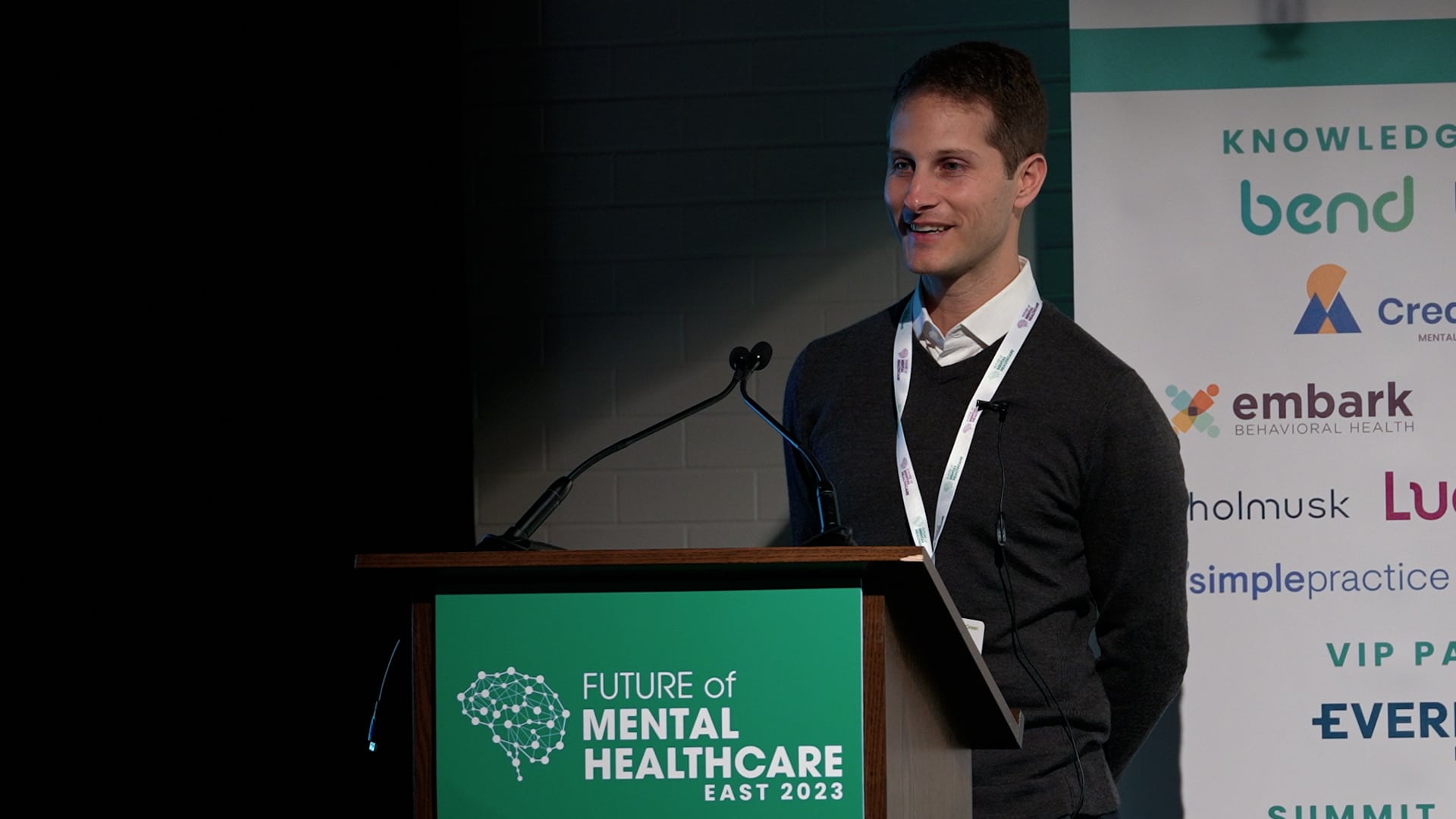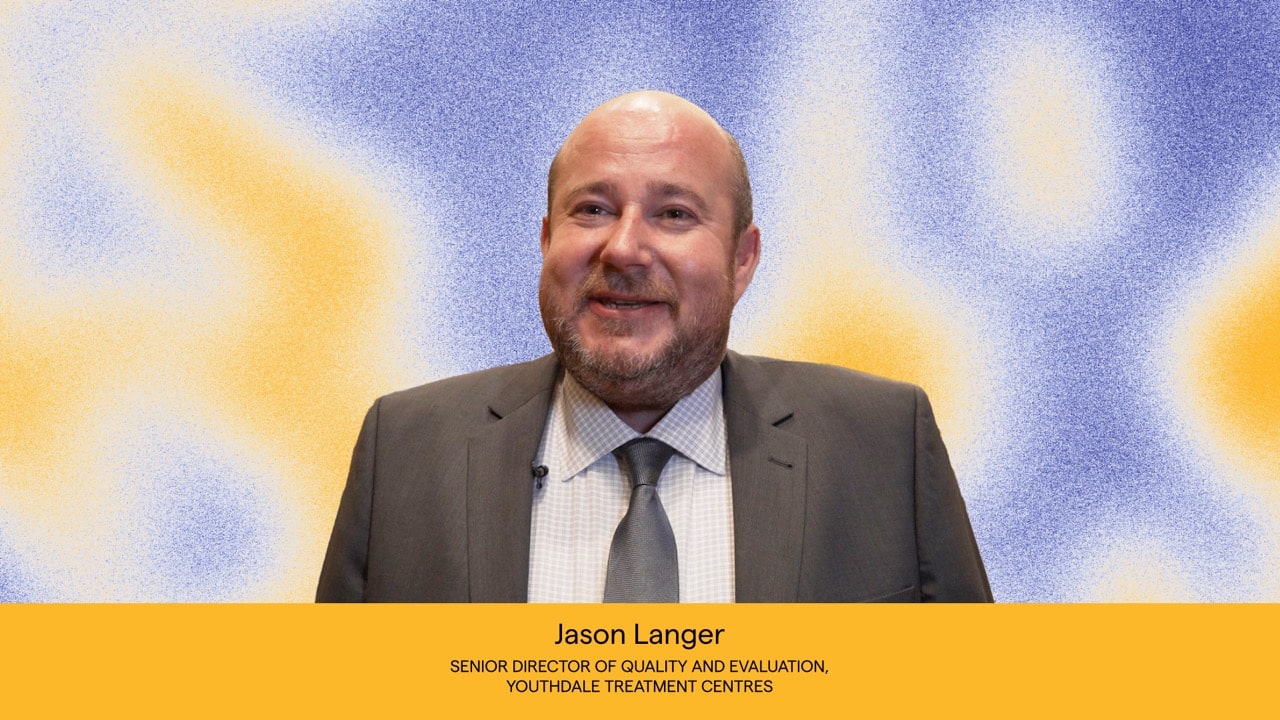
This past year, our team had the pleasure of attending and presenting at 14 different behavioral health conferences across North America. From the Behavioral Health Business VALUE Conference in March to Behavioral Health Tech in November, our schedules were packed with enriching conversations, great insights, and several airports. Now that 2023 is up, we thought it would be a good time to reflect on some of our key learnings, notable topics, and standout themes from these events—the culmination of which offers a good snapshot of where the behavioral health industry is today, where the major players and industry experts predict we’re headed for the future, and how Greenspace can support our partners as these changes continue to evolve.
Let’s start with what we’re most known for at Greenspace: Measurement-Based Care
Measurement-Based Care
The growing interest in and adoption of MBC is becoming clearer by the day with small to large service organizations across North America prioritizing its implementation across their services. Our CEO and Co-founder, Jeremy Weisz, had the pleasure of presenting on the topic at the Future of Mental Healthcare East Summit in April.
His presentation “How Measurement-Based Care is Transforming Behavioral Health” outlined the revolutionary impact MBC is having on behavioral health services and sparked many enlightening and exciting conversations with clinical leaders in attendance.
We also had the opportunity to share the success story of several of our partners including the Nova Scotia Health Authority, who implemented a successful phased MBC roll out across the province, and have been seeing significant clinical improvement as a result:
We continued the conversation at the American Psychological Association (APA) conference, this time through a presentation hosted by our Chief Growth Officer, Jesse Hayman, in partnership with the exceptional Dr. Elizabeth Connors, from the Yale Measurement-Based Care Collaborative. Here, we covered the research and outcome data behind MBC and offered some guidance to ensure successful implementation. The focus here was really on the approach, which is key to promoting strong adoption of MBC. We shared how we can support providers to continually build and enhance the skills that help facilitate a truly client-centered model of care.
MBC was a dominant topic at almost all of the conferences we attended. It’s becoming increasingly clear that most organizations understand the value and need for Measurement-Based Care at an individual clinician, client, organizational, and system level — and we’re seeing this reflected in the proliferation of MBC in service settings throughout North America. The concerns we typically hear are surrounding ease of implementation and technological adoption— which is why Greenspace exists, and why we will continue to make MBC easy to implement and ensure it provides clinical value to all stakeholders throughout the care process.
Takeway 1: Measurement-Based Care is and will continue to be a core part of high-quality behavioral healthcare. Improving available clinician education, training resources, intuitive technology, and rich, actionable data will remain as key priorities as adoption continues to spread across North America.
School Based Mental Health
This has become a major initiative at Greenspace in recent years, particularly because more provinces, states, and school boards are prioritizing the improvement of school-based mental health supports as youth mental health continues to be a growing challenge (read more about School Mental Health here). For example, both California and Maryland have designated schools as the primary location for youth mental health interventions, having dedicated millions in funding to providers that partner with schools to deliver treatment.
The schools and school boards we work with are hyper focused on tracking and improving care quality as they build out these services. Importantly, they understand that Measurement-Based Care is a foundational component of getting them there. As school-based mental health continues to be prioritized across North America, we look forward to seeing how MBC empowers consistent quality improvement and innovation of care within these programs.
Takeaway: Young people are struggling with their mental health and we need to continue partnering with school-based mental health programs and school boards in order to better support providers and help students maintain or improve their mental health. As this field continues to develop, we’re focused on strengthening our understanding of the goals and challenges of students and in-school providers, so our platforms can continually improve and better facilitate the work they’re doing.
Value-Based Care
We’ve talked a lot about value-based care (VBC) this year, but it’s been a hot topic across the behavioral health industry—including during the panel discussion at APA featuring Greenspace President, Simon Weisz; Brandon Fisher, our MBC clinic partner and Chief Strategy Officer at Merakey; Optum’s Senior VP, Andy Kelly; and Danna Lipton, LCSW.
One of the major insights shared by several of these experts is that VBC will soon become the norm across behavioral health. While its definition and application varies by state, it’s important that service organizations and providers position themselves to (1) meet requirements as they evolve and (2) be well equipped to negotiate value-based contracts now and in the future. As Jeremy shares in the video below (also from the Future of Mental Healthcare Conference), organizations and providers need to be able to collect and share outcome data that clearly demonstrates the quality of their services in order to succeed in VBC— we believe that MBC is the best way to get there.
Takeaway: Value-based care is coming to behavioral health. We need to continue to explore and promote the relationship between VBC and MBC, so we can better support our partners as they adapt their measurement and reporting processes to position themselves to thrive under a value-based behavioral healthcare system.
Whole-Person Care
Whole-person care was one of the major topics of the Behavioral Health Business VALUE Conference at the beginning of 2023. Part of this discussion centered around the need for more integrated technology and services, shared data, and interoperability across our health systems. In doing so, the goal is to treat people more holistically by creating an extended continuum of care that addresses both mental and physical health needs in tandem.
Jeremy joined another panel at the Future of Mental Healthcare West conference in October where whole-person care was the primary focus. During this Q&A, Jeremy and four other key behavioral health leaders discussed the need for more integrated health systems in order to achieve this vision. The session covered some nuanced questions about the role of technology and integration across healthcare systems in empowering whole-person care models, and also opened the door for some important discussions around improving the ease of access to youth mental health services.
The general consensus was that creating an effective whole-person care delivery system requires a multi-faceted approach. Expanding service access to young people (and all people generally) will require us to repair the fractures in current systems to make navigation and access straightforward for people seeking care, ensure client data can be easily shared across providers, and develop digital-front-doors to all services where anyone can access the support they need, right when they need it.
Takeaway: Greenspace will continue to work with service providers and health systems to create a more integrated and data-informed care system, where accessing all historical and current treatment results and contextual information is an automated process that ensures the information is only a click away. Through our Population Health Hubs, we’ve been working with health systems to address many of these gaps and improve service access for all populations.
Population Health
Greenspace has been focused on building and continually improving our Population Health service model over the last few years, but this year it became an increasingly important topic for state/provincial Departments of Health, payors, and large service providers. Centralized intake and navigation, alongside proactive outreach to those most at risk, were key topics in many conference panel discussions and conversations we had over coffee outside of the sessions.
At Future of Mental Healthcare West there were several discussions about what an effective approach to Population Health looks like. This usually included broad access to lower intensity, upstream resources, with the goal of decreasing mental health deterioration across populations and alleviating capacity challenges for traditional 1:1 services to ensure timely care is available to those who need it most. This was a common thread across almost all the large health systems and payors we’ve been speaking to.
Our vision for Population Health addresses these priorities by creating a digital front-door to all services with easy access to upstream care options through a stepped care model. By embedding MBC at its core, it also allows systems to leverage outcome-data to understand the effectiveness of resources and treatment options across the full ecosystem of behavioral health services, while highlighting service gaps that need to be addressed. Our Chief Growth Officer, Jesse Hayman, expanded on the goals of Population Health at the Collaboration for Change Conference this year:
Not only can we leverage technology to ensure upstream interventions are readily available to all people in need of support, the model is easily scalable and can significantly reduce healthcare costs and demand for 1:1 care services. It allows systems to be more efficient and is an approach that puts less burden on 1:1 care, alleviating the need to continually find new providers which is currently a shared challenge across systems. At FMH West, Inderpreet Dhillion from Permanente Medical shared his thoughts on this, stating that it’s not possible for everyone to access 1:1 care, as that would require 16 million therapists in the US. The solution needs to be technology driven, scalable, and built to help anyone in need of support receive timely access to the care that is most appropriate for their challenges.
Takeaway: Keep driving Population Health innovation. The future of population level behavioral healthcare needs proactive, accessible support. It requires effective technology that offers a ‘one-stop-shop’, digital-front-door to mental health resources and self-guided services, empowers proactive mental health maintenance, and provides a direct connection to crisis support and 1:1 treatment when needed. Alongside payors and health systems, we are setting the standard for what population level mental healthcare should and will look like.
Our Partners Are Leading the Way
Many of the conferences we attended this year were hosted by our partners, including state associations like the Florida Behavioral Health Association (FBHA), Illinois Association of Behavioral Health (IABH), North Carolina Community Health Center Association (NCCHCA), and other health networks like Rehabilitation and Community Providers Association (RCPA), Children’s Mental Health Ontario (CMHO) and Family Services Ontario (FSO). These groups are working to bring provider organizations together in order to build collaborative Measurement-Based Care implementations and improve the quality of care across their regions or specific populations. Many of them have presented on their approach and use of Measurement-Based Care, leveraging their Greenspace data to enhance and share service outcomes in all of their unique settings.
At the NCCHCA conference, we presented alongside Choptank Community Health, a Federally Qualified Health Clinic (FQHC) who has had a successful MBC implementation and wanted to share their experience with other service organizations throughout North Carolina. Both the IABH and RCPA conferences hosted presentations about the value of coordinated MBC implementations, which have helped drive MBC adoption for many of our association partners’ member organizations, while ensuring that data collection is uniform across their regions and can be leveraged to inform benchmarking, statewide learnings, and service improvement.
Throughout the course of the year, we’ve seen more of our MBC partners become champions for this movement. At the Ontario First Responders Conference, our partner and Director of Research and Outcomes at Homewood Health, Shannon Remers, shared this powerful quote in her presentation:
“There is a paradigm shift happening in mental healthcare. It’s time to use MBC to help guide the best therapy pathway for each individual and deliver the best possible outcomes for all people accessing care.”
We are consistently blown away by the incredible work and dedication of the organizations we work with. We would not be seeing the momentum for MBC growing as rapidly as it is if it were not for their partnership and passion for offering the highest quality of care possible.
Takeaway: We work with incredible organizations that are focused on continual innovation and improvement. It is an honor to be able to support them as they implement MBC to improve the quality of care they deliver to the people they serve and lead the way for other organizations throughout North America.
Final Thoughts
It is always energizing being among so many leading provider organizations, payors, and industry experts—participating in the important discourse around the technology, policies, and innovation that are driving the behavioral health industry forward. These conferences and events play a major role in the work we do every day and help us prioritize enhancements and improvements to our MBC solutions. It’s inspiring to see and feel the widespread momentum for Measurement-Based Care and other innovations that will improve our behavioral health system. The collective effort to enhance care quality and improve outcomes this year has been strong, and we cannot wait to see what we accomplish as an industry in 2024.











